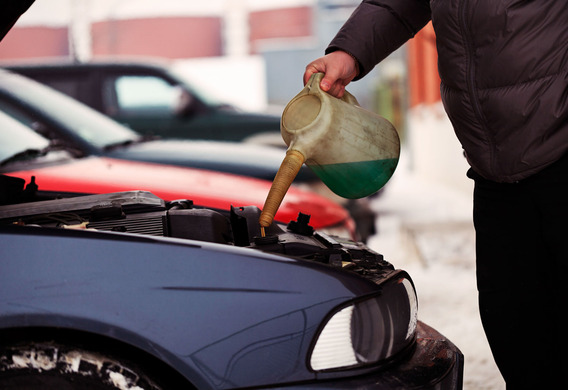
Antifreeze is called fluids not freezing at low temperatures. So any coolant is antifreeze. Tosol is a variant of antifreeze, which was released in the 1970s in the USSR. What's sad?
What's sad?
Anti-freeze consists of ethylene glycol, water and various additives. These are the additives, and all the antifreeze is different. With regard to longing, it has inorganic substances (silicates, phosphates, nitrites) and is a traditional antifreeze. At the time of its appearance, this antifreeze (longing) was considered advanced. However, to date, there is a preference for carboxylic antifreeze, where the corrosive additives are organic substances.
The disassemble began with the fact that with the passage of time in Russia, it became the face of all antifreeze names. There was a shift in the concepts, and all domestic antifreeze became depressing and imported by antifreeze. In order to make things clearer, a little bit of historical evidence is needed.
History of creation
In the late 1960s, the Volga Automobile Plant (VAZ) was launched. The Jeiguly cars, which were produced on it, were analogues of Italian Fiat cars. The Italian side oversaw the project, carefully following all production technology. In particular, the Italian liquid "Paraffle" was used in the Fiat refrigeration system, so it was necessary to find a domestic analogue.
In the USSR at the time there was no such abundance of antifreeze, as it is now. There was one-the only "Antifreeze over GOST 159". Italian technologists carried out the necessary studies, which showed that the intense corrosion of metals, strong pendulum and low alkalinity made it impossible to use this anti-freeze in "Zhiguly". The question of the development of a new Soviet antifreeze has come into question.
After three years of fabrics in 1971, the staff of the State Union Institute of Organic Chemistry and Technology of the State Union Institute of Organic Chemistry and Technology have developed a coolant liquid. The name was invented by one of the authors of the V.N. Kirian project. He connected the first letters of the department name (TOP) and added the end of the L to be recognized for the group of all alcohols (ethanol, etc.).
Three stamps of this antifreeze were created: "TOSOL A" ("A" means car), "TOSOL-A40" and "TOSOL-A65" (figures indicate freezing temperature). In a few years, the same department of the same institute issued a new brand "TOSOL-AMA" ("M" means retrofitted), adding new additives.
Thus, the original TOSOL was an original antifreeze with its own recognizable name. Only state enterprises have been released, strictly observing the technology.
Many state-owned enterprises ceased to exist in the 1990s for understandable reasons. You're not allowed to let go of the TOSOL.
For a long time, there was a myth that melancholes are fluids for domestic machines, and antifreeze is for foreign cars
The trademark was not protected (it was not practised in the Soviet Union), however, it was very rugged. This has enabled many small businesses to start issuing coolant, using the TOSOL brand. Although in essence this was not the TOSOL, but a variety of surrogates. They should be called Cool Liquids. The name of the nothyol was the name of the people.
The situation has improved in 2000, but has not changed dramatically. TOSOL continues to produce completely different liquids on other recipes. For a long time, there was a myth that melancholy was fluids for domestic machines, and antifreeze was for foreign cars. This allegation is incorrect. In recent times, many domestic manufacturers have begun to call their coolant with antifreeze, thus allowing them to be used in an foreign arch. However, the correct choice of anti-freeze can only be done by focusing on the tolerance for anti-freeze in the car. At present nostol is used in trucks.
The Disadvantages of the Puzzle
As already noted, at the time of its creation, TOSOL was an advanced antifreeze. However, new and new cooling fluids have emerged over time, and today it is easier to note the negative side of the longing.
- Tosol is less resistant to high temperatures, its boiling point is slightly higher than water (for comparison, antifreeze has a boiling point of 115 degrees).
- The Tosol loses its cooling capacity from 30 to 40 km (antifreeze-through 250).
- The melancholy of the metal produces a 0.5 mm protective layer of protection. But the low heat transfer is the low heat transfer, which increases the fuel consumption, respectively, the engine is quicker to wear out.
- Because of its inorganic salts, the system produces gels and sediations. This often results in a heat sink.
- Tosol is more poisonous than other modern antifreeze.









